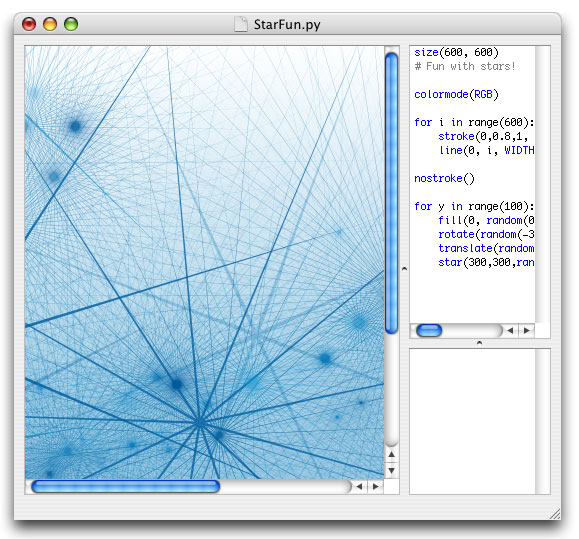

G_complete.show('A_Complete_Networkx_Graph.html')ĭisplay(HTML('A_Complete_Networkx_Graph.html')) Title="Hello! I am Node "+str(i),borderWidth=b) G_complete.add_node(i,label=str(i),color=c,value=val, Heading="A Complete Networkx Graph",directed=True) G_complete =net.Network(height='600px',width='50%',īgcolor='white',font_color="red",notebook=True, We will also add the title for the nodes and we will make the network graph directed to display the arrows of the edges as well. Along with this, we will also display the physics buttons for the network graphs.
NODEBOX NETWORK GRAPH CODE
Let’s have a look at the code below, which will cover all the custom attributes mentioned above along with a few extra. G_borders.show('Simple_Network_Graph_Borders.html')ĭisplay(HTML('Simple_Network_Graph_Borders.html')) G_borders.add_node(i,label=str(i),color=c, Heading="Network Graph with Different BorderWidths")

Have a look at the code below which will assign shapes to the nodes. One type has the label inside of it and the other type has the label underneath it.

There are a number of shapes available, including squares, stars, polygons, and others. The shape of the node defines what the node looks like in the final visualization. G_colors.show('Simple_Network_Graph_colors.html')ĭisplay(HTML('Simple_Network_Graph_colors.html')) G_colors.add_node(i,label=str(i),color=c,value=val)

Heading="Network Graph with Different Colors") Have a look at the code and output below.
NODEBOX NETWORK GRAPH FULL
We can also specify the full RGBA or hexacode specification as the color below. We will be adding the color in the form of the color attribute that can also take a plain HTML color like red or blue. We will be generating random colors in the form of hexacode using the function below. This section will focus on adding various colors to the nodes. Here’s what the amazing visualization looks like. G_sizes.show('Simple_Network_Graph_sizes.html')ĭisplay(HTML('Simple_Network_Graph_sizes.html')) G_sizes.add_node(i,label=str(i),value=val) Heading="Network Graph with Different Sizes") a name in the add node box and press enter to add the node to the graph. Although it is not required (everything will run fine without the extensions), you can compile binaries manually from the source code.
NODEBOX NETWORK GRAPH FOR MAC OS X
Binaries have been precompiled for Mac OS X 10.5, but these may not work on your machine. I've also tried generating the graph to an SVG file and using Inkscape to view it, but it's too slow and takes too much memory and because of the sheer number of vertices it becomes a tangled mess.G_sizes = net.Network(height='600px',width='90%', JavaScript app for displaying annotated network graphs from the LittleSis API. NodeBox comes bundled with a number of C extensions that increase performance. I've looked at graphviz and matplotlib, but apparently they're only for working with static graphs and apparently would need significant amount of work to do interactive manipulations (correct me if I'm wrong, I've only looked at them briefly). I have already written a simple prototype of my program using Tkinter Canvas, but I need a more serious graphing library to expand the program. Preferably it should be a library with not too many dependencies (except perhaps for Gnome). It should be able to handle from 100-1000 nodes and about 300-4000 vertices reasonably in my 4 year old laptop (I typically start with around 100 nodes, but the number might expand depending on user input). Preferably, the layouting algorithm should place adjacent nodes near each other. The graphing library must support directed graph and be able to layout the nodes automatically. This language requirement is because the dataset I'm working with only have Python binding. I have Python 2.7 and Python 3.1, but can downgrade to 2.6 if necessary. I'm looking for an interactive graphing library for Python.īy "graph", I meant a set of nodes connected by a set of vertices (not a plot of values over x-y axis, nor a grid of pixels).īy "interactive", I meant I can drag-and-drop the nodes around and I need to be able to click on the nodes/vertices and have the library pass the nodes/vertices to my callbacks, which may add/remove nodes/vertices or display information (I cannot load the full graph at startup as the dataset is too large/complex instead I'll be loading only the necessary slices of data depending on user inputs).īy Python, I meant the programming language Python, the graphing library should have CPython binding.


 0 kommentar(er)
0 kommentar(er)
